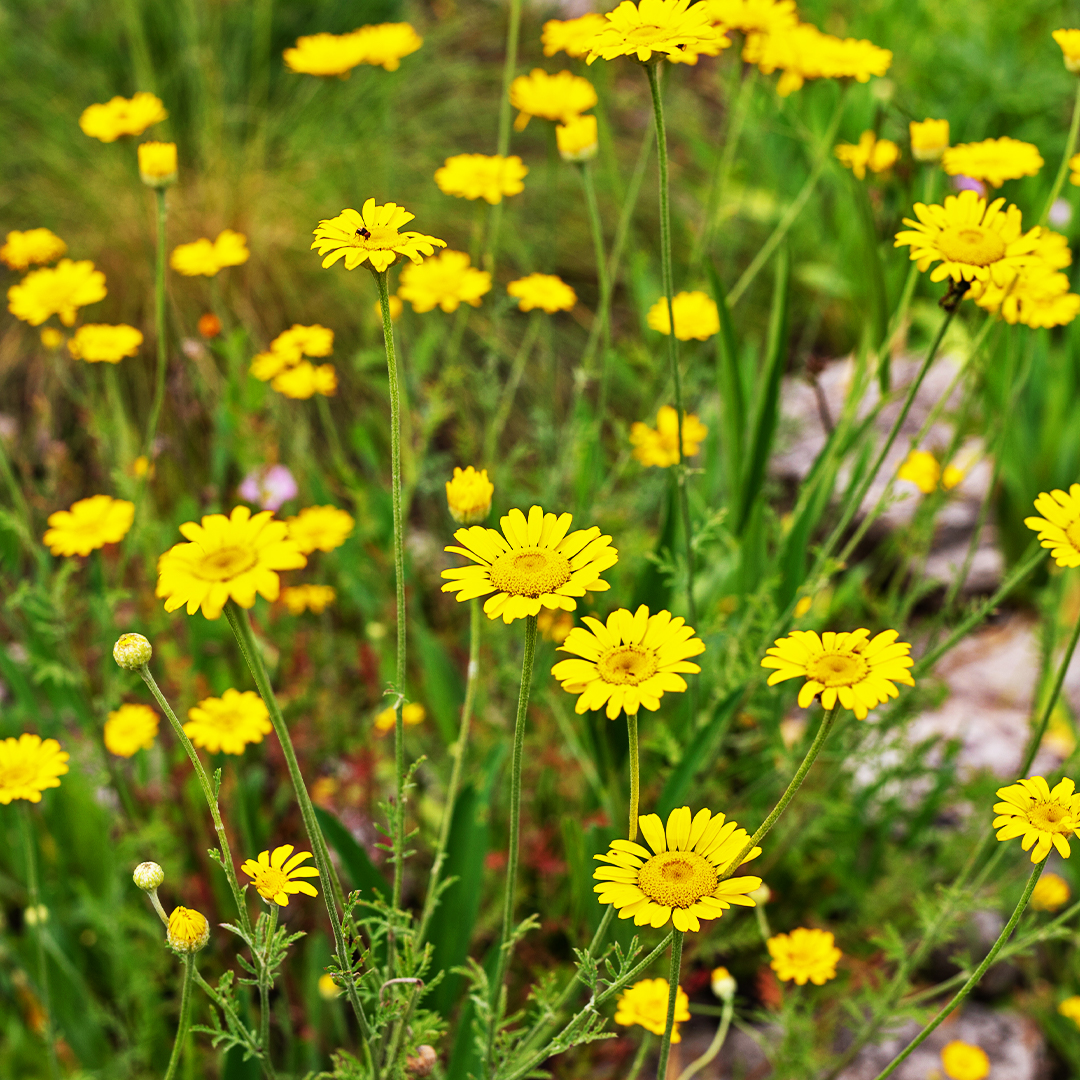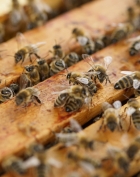Corn Marigold
Chrysanthemum segetum
Best Time to See: June, July, August, September, October
Habitat: Grassland, Arable, Farmland
Colour: Yellow
The bright yellow flowers were once abundant in cornfields throughout Britain.
Corn Marigold it is not a true native, but was probably introduced in ancient times with grain. Its original home is probably western Asia and the Mediterranean. It has been found in Scottish Neolithic deposits and so probably arrived with the Neolithic introduction of agriculture.
This wild plant is of medium height and the flowers are golden-yellow discs with prominent ray florets. These are borne singly on the ends of the stems. The leaves are deeply toothed, slightly fleshy, hairless and covered with a waxy layer that gives them a greenish blue-grey colour.
Habitat and distribution
This wild flower is often found as an arable weed, but it can also be found on other disturbed sites such as rubbish tips, road verges, waste ground and even over-grazed pasture. It has a patchy distribution across the UK.
Did you know?
- It is a good plant for bees, butterflies and moths, and is the food plant of the Chamomile Shark Moth. In the East, the young shoots are eaten as a vegetable, particularly in China. It was a familiar sight in 16th Century English gardens.
- Common names often refer to the colour (gold, golden cornflower, golden daisy, sunflower, yellow bottle, yellow horse daisy, yellow moons and yellow ox-eye) but also include some rather curious names like boodle, bozel, bozzom and buddle.
- In his 1640 Theatrum Botanicum, John Parkinson described the use of Corn Marigold in midsummer garlands and hung up on houses.
- There are plenty of associated Anglo-Saxon place-names such as Goldhanger in Essex, Goldor in Oxfordshire, Golding in Shropshire, Goltho in Lincolnshire and Gowdall in the West Riding.
- Grigson remarks on not only the charming green and yellow of Corn Marigold but also 'the oddly attractive scent of the flowers'.
Conservation status
It was a serious weed in Victorian times, but is now much reduced due to improved seed cleaning, liming, herbicides and the shift to autumn-sown crops. Much of this decline has taken place since 1930.

